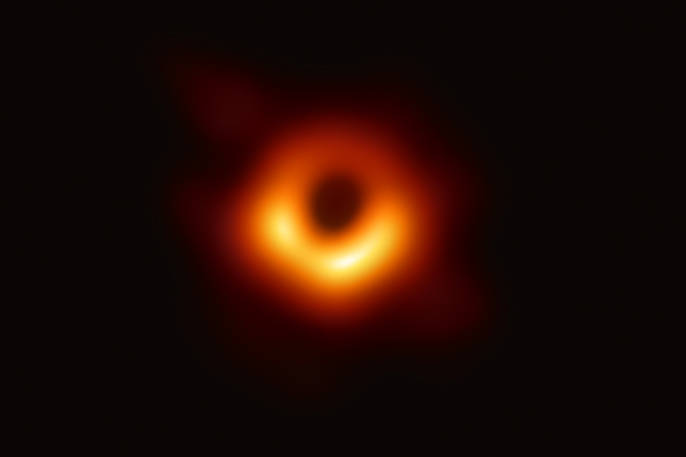


The groundbreaking image, realized with “a telescope the size of the Earth,” shows a black hole located in the Messier 87 Galaxy [2], inside the constellation Virgo, about 55 million light years from us. It is the result of two years of computer analysis of data gathered from eight radio observatories located across the globe, which form part of a network that constitutes the Event Horizon Telescope [3] or EHT, the international project that rendered this image possible.
An “event horizon,” the term from which the network takes its name, designates the edge of a black hole, the final point at which light and matter can still be observed before disappearing into it. Black holes, which were first theorized by Albert Einstein [4], are in fact abysses that completely absorb everything that gets sucked into them, including light. For this reason, they are by definition unseeable.
How then were EHT astronomers able to obtain this image? Combining data coming from eight radio observatories located on six mountains across four continents, the international team (which included Italians from INAF [5] and INFN [6]) was able to capture the "accretion disk" surrounding the event horizon, that is a swirl of matter and energy which pulls in photons (light particles.)
That’s why the image looks like a ring of light. Think of it as a negative, the black hole is actually the dark spot in the center. "Now we can finally observe them," commented Luciano Rezzolla, a member of the EHT Collaboration Board. "Today we are opening the first page of a book in which it is possible to make increasingly accurate observations of these objects, whose existence Albert Einstein predicted a century ago.”
Einstein himself was reluctant to accept what his very own equations revealed, which is that when too much energy or matter is concentrated into one place it causes matter to collapse, thus forming what we call a black hole. Their existence is now however widely accepted within the field.
This image shows how far we’ve come in such a relatively short time: in the 64 years since Einstein’s death, we went from refuting the existence of black holes to being able to “see” the unseeable. The EHT project is also a shining example of global teamwork. By bringing together researchers from around the world, it showed how this type of international collaboration truly is the way of the future.
Source URL: http://440468.6bgr9ubv.asia/magazine/focus/facts-stories/article/seeing-unseeable-first-image-black-hole
Links
[1] http://440468.6bgr9ubv.asia/files/blackholemessier87jpg
[2] https://en.wikipedia.org/wiki/Messier_87
[3] https://eventhorizontelescope.org/
[4] https://en.wikipedia.org/wiki/Albert_Einstein
[5] https://en.wikipedia.org/wiki/INAF
[6] https://en.wikipedia.org/wiki/Istituto_Nazionale_di_Fisica_Nucleare